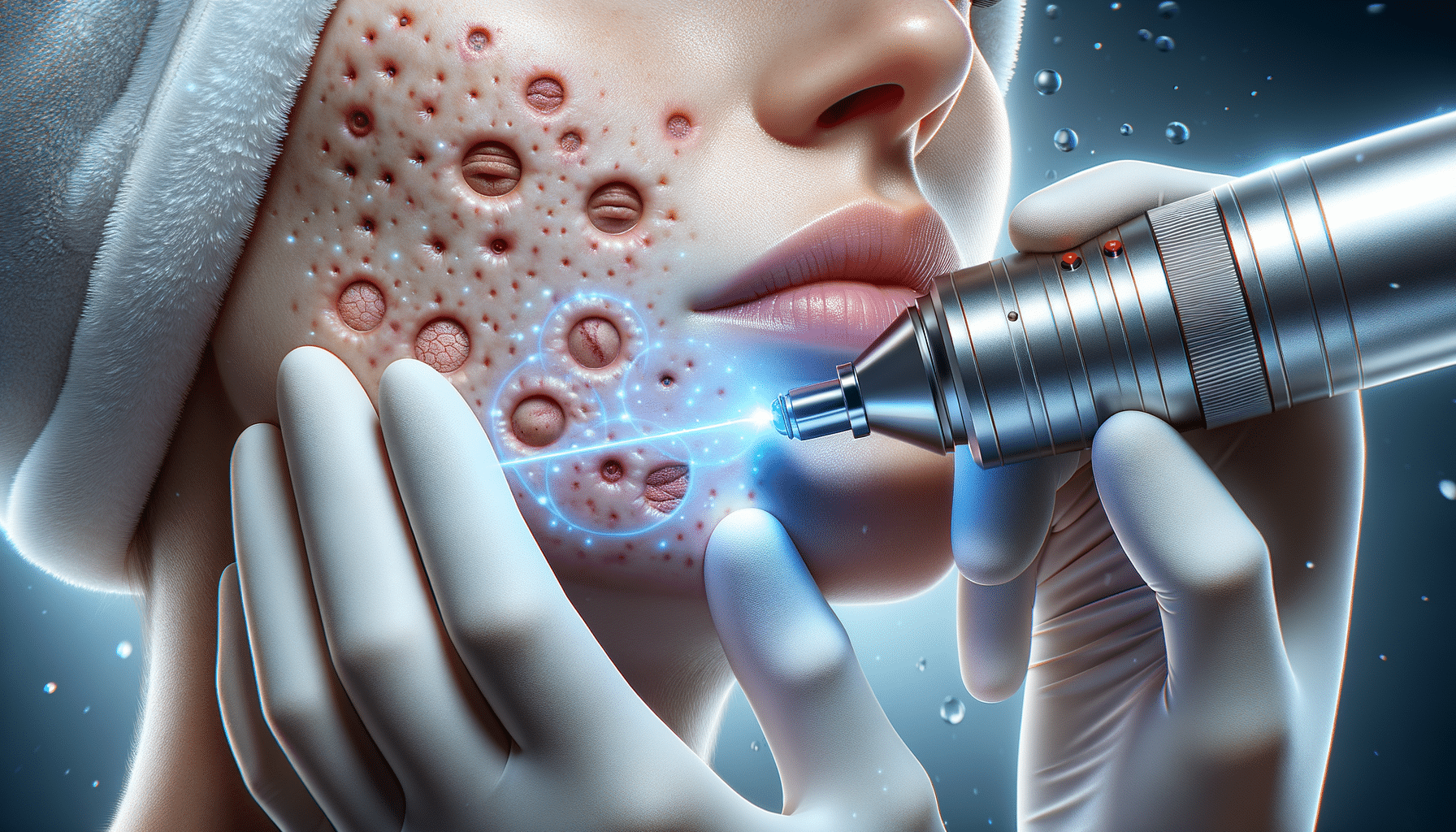How Fractional CO2 Lasers Can Help Manage Acne and Scars
Struggling with acne and its scars? Fractional CO2 lasers offer an advanced treatment that can help reduce the appearance of scars and improve skin texture. By resurfacing the skin and stimulating collagen production, it may help minimize scars and prevent future breakouts. While it can be effective, results vary, and continued care may be needed for optimal improvement.

Understanding Fractional CO2 Laser Treatment
Fractional CO2 laser treatment is a popular dermatological procedure aimed at improving skin texture and appearance. This advanced technique uses carbon dioxide lasers to create microscopic columns of thermal damage in the skin. The primary goal is to stimulate the body’s natural healing process, leading to the production of new, healthy skin cells and enhanced collagen production.
Unlike traditional laser treatments that affect the entire skin surface, fractional CO2 lasers target only a fraction of the skin at a time. This approach allows for faster healing and reduces the risk of side effects. Patients often choose this treatment for various skin concerns, such as acne scars, wrinkles, and uneven skin tone.
The procedure is typically performed in a dermatologist’s office and may require multiple sessions for optimal results. Each session can last between 30 to 60 minutes, depending on the area being treated. Patients are advised to follow post-treatment care instructions to ensure proper healing and to achieve the desired outcomes.
Benefits of Fractional CO2 Laser Treatment
Fractional CO2 laser treatment offers numerous benefits for those seeking to enhance their skin’s appearance. One of the most significant advantages is its ability to effectively reduce the appearance of acne scars. By promoting collagen production, the treatment helps to fill in and smooth out scarred areas, leading to a more even skin texture.
In addition to scar reduction, fractional CO2 lasers are known for their anti-aging effects. They can minimize the appearance of fine lines and wrinkles, making the skin appear more youthful and rejuvenated. The treatment also addresses issues such as sun damage and pigmentation, contributing to a more uniform complexion.
Another benefit is the relatively quick recovery time compared to other laser treatments. While some redness and swelling can occur, these side effects are generally mild and subside within a few days. Patients often notice improvements in their skin within a week, with continued enhancement over several months as collagen continues to rebuild.
Considerations and Potential Side Effects
Before undergoing fractional CO2 laser treatment, it’s essential to consider potential side effects and whether this procedure is suitable for your skin type and concerns. While the treatment is generally safe, some individuals may experience temporary side effects such as redness, swelling, and mild discomfort. These effects typically resolve within a few days.
In rare cases, patients may experience more severe side effects, including prolonged redness, infection, or changes in skin pigmentation. It’s crucial to discuss these risks with a qualified dermatologist who can assess your skin and recommend the best course of action.
Patients with darker skin tones may be at a higher risk of pigmentation changes, so it’s important to have a thorough consultation to evaluate the potential benefits and risks. Additionally, those with certain medical conditions or who are pregnant should consult their healthcare provider before undergoing treatment.
Preparing for Your Treatment
Preparing for fractional CO2 laser treatment involves several steps to ensure optimal results and minimize potential side effects. Patients should start by scheduling a consultation with a board-certified dermatologist to discuss their skin concerns and treatment goals. During this appointment, the dermatologist will evaluate your skin and determine if fractional CO2 laser treatment is appropriate for you.
In the weeks leading up to the procedure, patients are advised to avoid sun exposure and use a broad-spectrum sunscreen to protect their skin. It’s also important to discontinue any skincare products that may increase skin sensitivity, such as retinoids or exfoliants.
On the day of the treatment, patients should arrive with clean skin free of makeup or lotions. The dermatologist will apply a topical anesthetic to minimize discomfort during the procedure. Following the treatment, patients will receive detailed aftercare instructions to promote healing and achieve the best possible results.
Conclusion: Is Fractional CO2 Laser Treatment Right for You?
Fractional CO2 laser treatment offers a promising solution for individuals seeking to improve the appearance of acne scars, wrinkles, and uneven skin tone. While the treatment can be highly effective, it’s important to consider your skin type, medical history, and treatment goals before proceeding.
Consulting with a qualified dermatologist is the first step in determining if this treatment is right for you. By understanding the benefits, potential side effects, and preparation involved, you can make an informed decision about whether fractional CO2 laser treatment aligns with your skincare objectives.
Ultimately, this treatment can be a valuable tool in your skincare regimen, helping you achieve smoother, more radiant skin. With proper care and guidance, fractional CO2 laser treatment can contribute to a more confident and refreshed appearance.